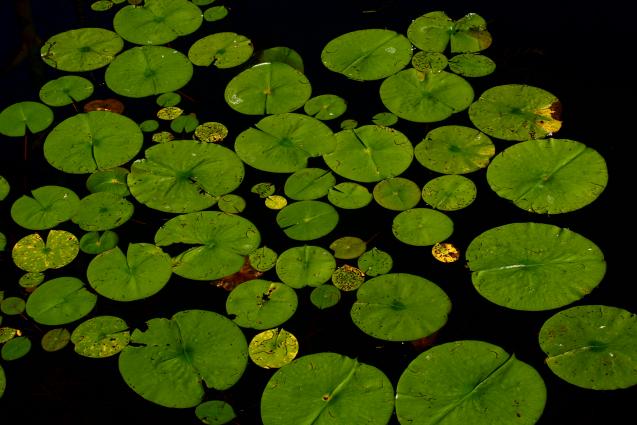
Top 5 Tips For Healthy Lake Maintenance
By Clearpond|April 09, 2015
What is limnology? That may seem like an odd question to ask when the discussion is about tips on lake maintenance, but it’s actually got EVERYTHING to do with the topic.
Limnology is the scientific study of the life and phenomena of inland waters, including lakes, ponds, rivers and wetlands - both natural and manmade - but the key word here is ‘scientific’. It shows that lake maintenance isn’t just something that happens by itself. It can’t be left to chance or done haphazardly - it is a science and it is a serious and important undertaking.
Before listing the top tips for maintaining a lake, it’s important to be aware that no two lakes or ponds are the same. Each one has its own unique ecosystem and any management or maintenance strategy has to be tailored to suit each individual situation.
Many different things affect the health of the ecosystem including light, temperature, nutrients, oxygen, design, structure and vegetation and it’s important to understand how these should all balance with each other, why problems occur and what effect they have on the pond or lake.
Let’s look at five valuable tips when it comes to ensuring the long-term health of your lake or pond:
Test the water
A chemical imbalance in the water is harmful to the health of a lake or pond. A simple testing kit will enable you to monitor the levels of nitrates and phosphates in the water body and will very quickly indicate if remedial action is required.
Manage nutrients
The growth of algae and aquatic weeds is directly correlated to the level of nutrients in the water. Excess nutrients can result from numerous situations, including too much sediment and dead vegetation in the water and excessive run-off water from surrounding areas (that contains fertiliser and other chemicals). An effective lake management strategy will involve understanding the sources of nutrients, how these are absorbed and how they are broken down as well as the impact that nutrients have on the overall water chemistry - and then taking the necessary action to restore any imbalances.
Oxygenate the water
Oxygen is vital to all forms of life in the lake and is supplied to the water by several different sources including photosynthesis (from water plants), wave and wind action and rain. However, sometimes Mother Nature’s way simply isn’t enough to maintain the chemical balance and equilibrium required to sustain healthy plant, fish and amphibian life and artificial means of aerating the water (and thereby oxygenating it) are required. These artificial means take many different forms, including surface or submerged aeration devices, fountains, compressors and windmills to name just a few.
Control weeds
Complete control of weeds is usually impossible, but a weed management strategy that involves physical reduction of plants as well as biological control can keep weed levels down.
Watch out for sludge/sediment levels
Out of sight, out of mind is not a good strategy when it comes to effective lake management! Even though it can’t be seen, an increased level of decaying matter and sludge at the bottom of a lake will decrease water depth and therefore raise water temperatures. Excessive sludge and decaying plant debris can also cause an imbalance in the pH of the water, and will also provide additional nutrients to fuel the growth of algae and aquatic weeds. It can also result in an unpleasant smell - which all point to the critical importance of removing excess matter and ensuring a healthy aquatic balance.
Ideally, lake management should be about prevention rather than cure. A proactive strategy as opposed to a reactive one is far more environmentally friendly and of course, far more cost-effective in the long-term.
And sure, not everyone who is involved in the maintenance of a body of water is a limnologist, but given that there is so much science involved, advice from qualified lake management professionals such as the team at on finding the most cost-effective and ecologically friendly lake management strategies can be very helpful.
Limnology is the scientific study of the life and phenomena of inland waters, including lakes, ponds, rivers and wetlands - both natural and manmade - but the key word here is ‘scientific’. It shows that lake maintenance isn’t just something that happens by itself. It can’t be left to chance or done haphazardly - it is a science and it is a serious and important undertaking.
Before listing the top tips for maintaining a lake, it’s important to be aware that no two lakes or ponds are the same. Each one has its own unique ecosystem and any management or maintenance strategy has to be tailored to suit each individual situation.
Many different things affect the health of the ecosystem including light, temperature, nutrients, oxygen, design, structure and vegetation and it’s important to understand how these should all balance with each other, why problems occur and what effect they have on the pond or lake.
Let’s look at five valuable tips when it comes to ensuring the long-term health of your lake or pond:
Test the water
A chemical imbalance in the water is harmful to the health of a lake or pond. A simple testing kit will enable you to monitor the levels of nitrates and phosphates in the water body and will very quickly indicate if remedial action is required.
Manage nutrients
The growth of algae and aquatic weeds is directly correlated to the level of nutrients in the water. Excess nutrients can result from numerous situations, including too much sediment and dead vegetation in the water and excessive run-off water from surrounding areas (that contains fertiliser and other chemicals). An effective lake management strategy will involve understanding the sources of nutrients, how these are absorbed and how they are broken down as well as the impact that nutrients have on the overall water chemistry - and then taking the necessary action to restore any imbalances.
Oxygenate the water
Oxygen is vital to all forms of life in the lake and is supplied to the water by several different sources including photosynthesis (from water plants), wave and wind action and rain. However, sometimes Mother Nature’s way simply isn’t enough to maintain the chemical balance and equilibrium required to sustain healthy plant, fish and amphibian life and artificial means of aerating the water (and thereby oxygenating it) are required. These artificial means take many different forms, including surface or submerged aeration devices, fountains, compressors and windmills to name just a few.
Control weeds
Complete control of weeds is usually impossible, but a weed management strategy that involves physical reduction of plants as well as biological control can keep weed levels down.
Watch out for sludge/sediment levels
Out of sight, out of mind is not a good strategy when it comes to effective lake management! Even though it can’t be seen, an increased level of decaying matter and sludge at the bottom of a lake will decrease water depth and therefore raise water temperatures. Excessive sludge and decaying plant debris can also cause an imbalance in the pH of the water, and will also provide additional nutrients to fuel the growth of algae and aquatic weeds. It can also result in an unpleasant smell - which all point to the critical importance of removing excess matter and ensuring a healthy aquatic balance.
Ideally, lake management should be about prevention rather than cure. A proactive strategy as opposed to a reactive one is far more environmentally friendly and of course, far more cost-effective in the long-term.
And sure, not everyone who is involved in the maintenance of a body of water is a limnologist, but given that there is so much science involved, advice from qualified lake management professionals such as the team at on finding the most cost-effective and ecologically friendly lake management strategies can be very helpful.



